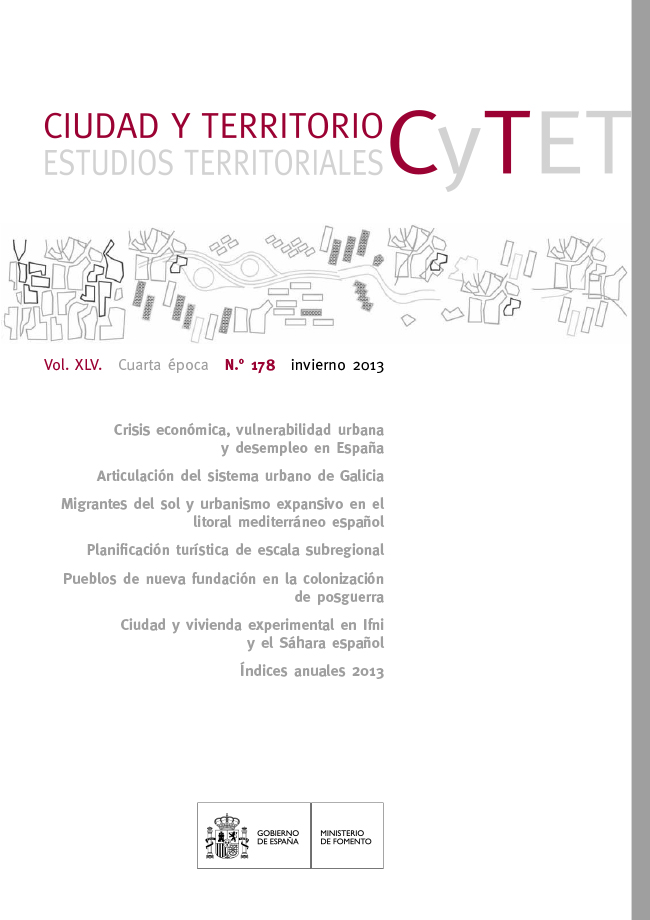Newly founded towns in post-war settlements: comparison with the cities of the ventennio bonifica italiana
Keywords:
Agricultural colonization, INC, bonifica integrale, contemporary Spanish architecture, colonization villagesAbstract
During Franco’s regime the Instituto Nacional de Colonización built around three hundred
new villages. Twenty years before, Mussolini’s regime, Italy had sponsored a similar operation: the
bonifica integrale. Spanish literature that revises the INC often refers to the Italian precedent.
However, these references remain only on a shallow level. This study proposes an analytical
comparison of the two operations, from the standpoint of an analytical reading at different scales.
Taking in both cases the same analytical tools, we will discover apparent similarities and differences
between them. This will bring awareness to the issue with adequate structural rigor of urban and
architectural analysis. As Spanish study case are taken the villages constructed in Extremadura as
a significant sample. From Italy are mentioned the most striking examples, by their broadcast or by
the impact they had, stressing on the knowledge, that technicians serving Spanish Colonization,
architects and agronomists, had.
The result of this analysis is an in-depth comparison of two operations with many points in common.
Downloads
Downloads
Published
How to Cite
Issue
Section
License
Copyright (c) 2013 José Antonio Flores Soto

This work is licensed under a Creative Commons Attribution-NonCommercial-NoDerivatives 4.0 International License.
Considering the provisions of the current legislation on Intellectual Property, and in accordance with them, all authors publishing in CyTET give -in a non-exclusive way and without time limit- to the Ministry of Transport, Mobility and Urban Agenda the rights to disseminate, reproduce, communicate and distribute in any current or future format, on paper or electronic, the original or derived version of their work under a Creative Commons Attribution-NonCommercial-NoDerivative 4.0 license International (CC BY-NC-ND 4.0), as well as to include or assign to third parties the inclusion of its content in national and international indexes, repositories and databases, with reference and recognition in any case of its authorship.
In addition, when sending the work, the author(s) declares that it is an original work in which the sources that have been used are recognized, committing to respect the scientific evidence, to no longer modify the original data and to verify or refute its hypothesis. Author(s) also declare that the essential content of the work has not been previously published nor will it be published in any other publication while it is under evaluation by CyTET; and that it has not been simultaneously sent to another journal.
Authors must sign a Transfer of Rights Form, which will be sent to them from the CyTET Secretariat once the article is accepted for publication.
With the aim of promoting the dissemination of knowledge, CyTET joins the Open Journal Access (OA) movement and delivers all of its content to various national and international indexes, repositories and databases under this protocol; therefore, the submission of a work to be published in the journal presupposes the explicit acceptance by the author of this distribution method.
Authors are encouraged to reproduce and host their work published in CyTET in institutional repositories, web pages, etc. with the intention of contributing to the improvement of the transfer of knowledge and the citation of said works.








 Enlace a CyTET en Linkedin
Enlace a CyTET en Linkedin